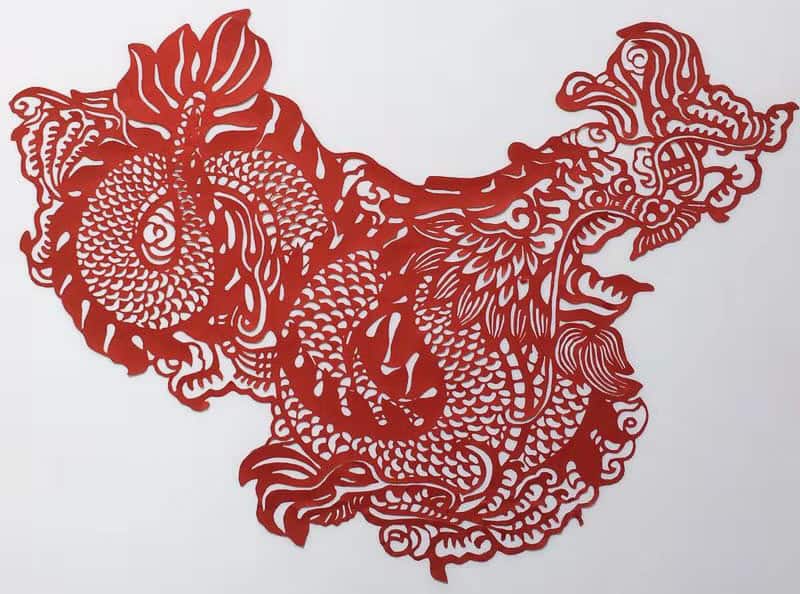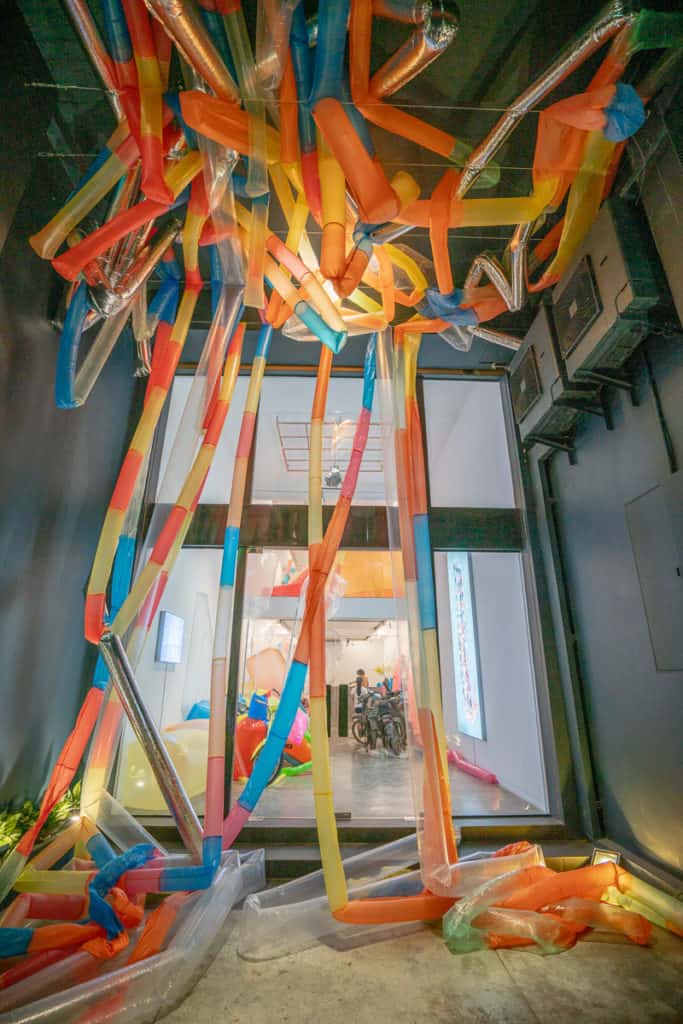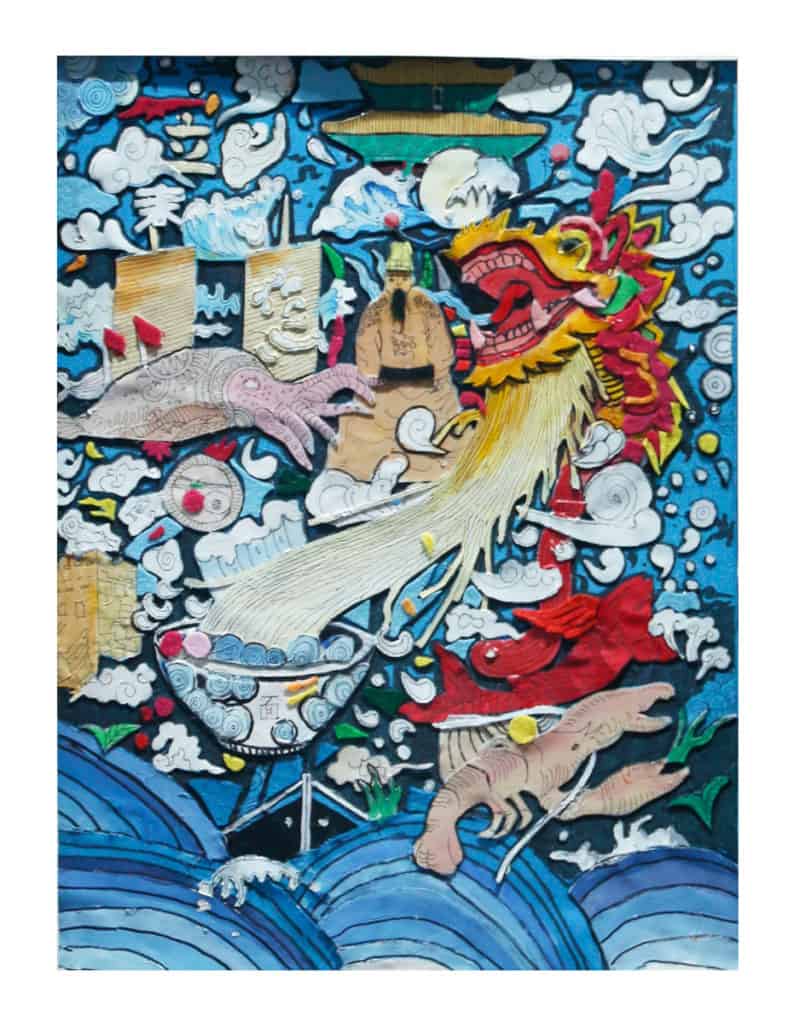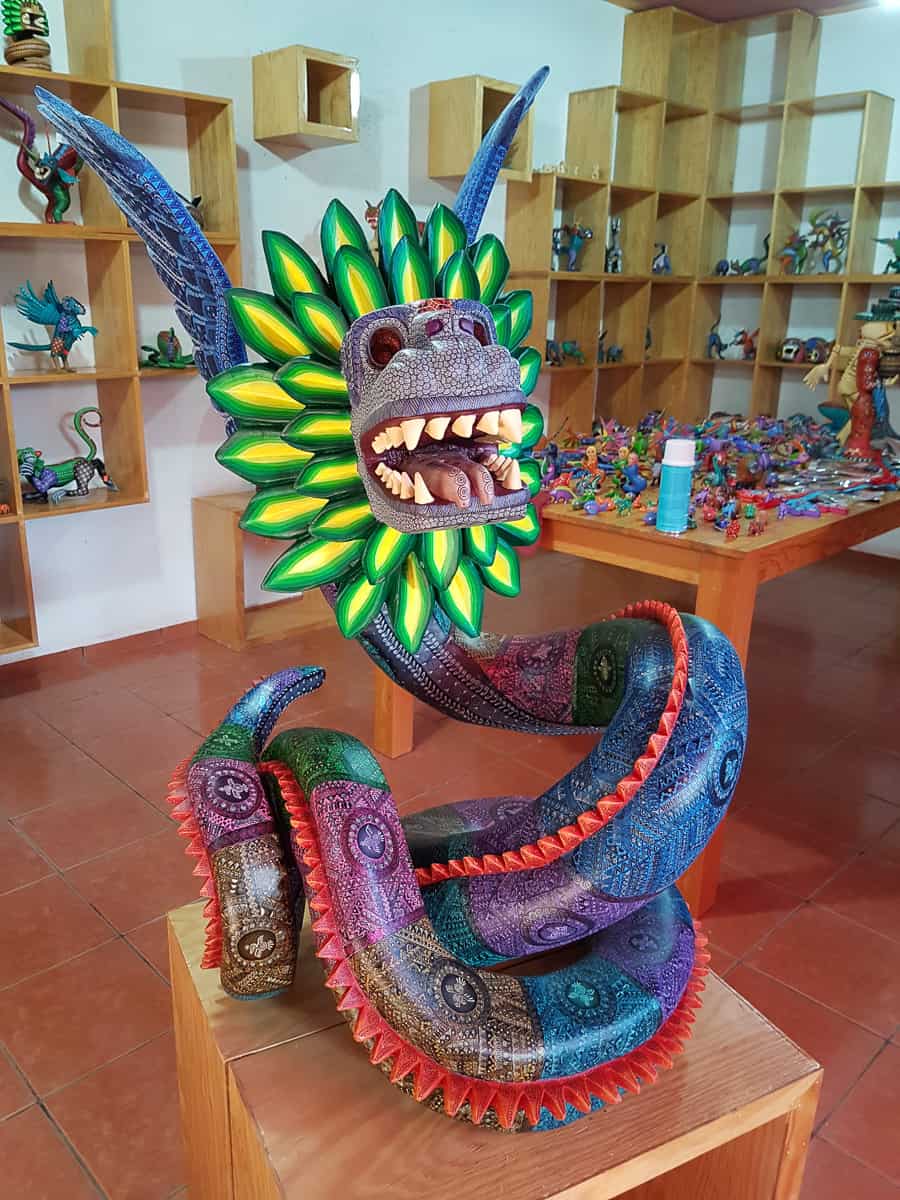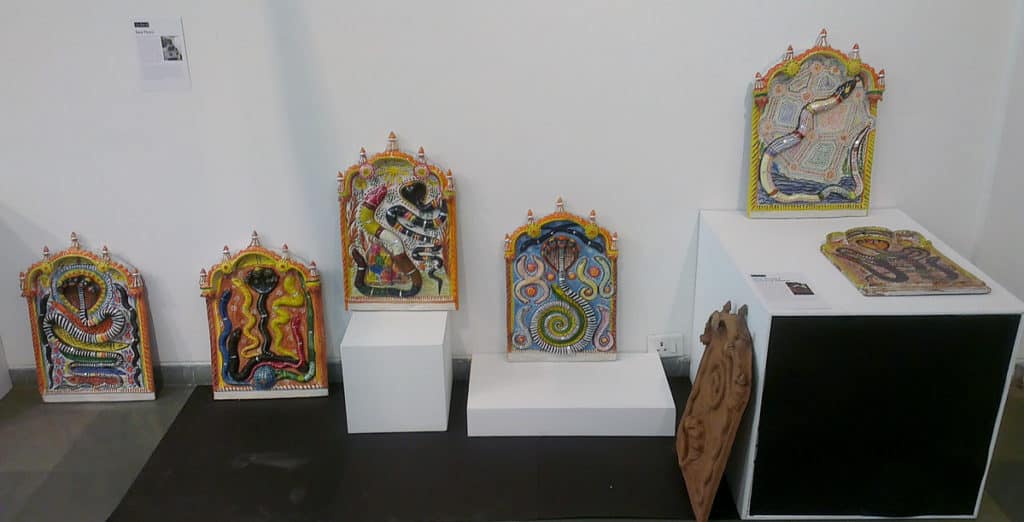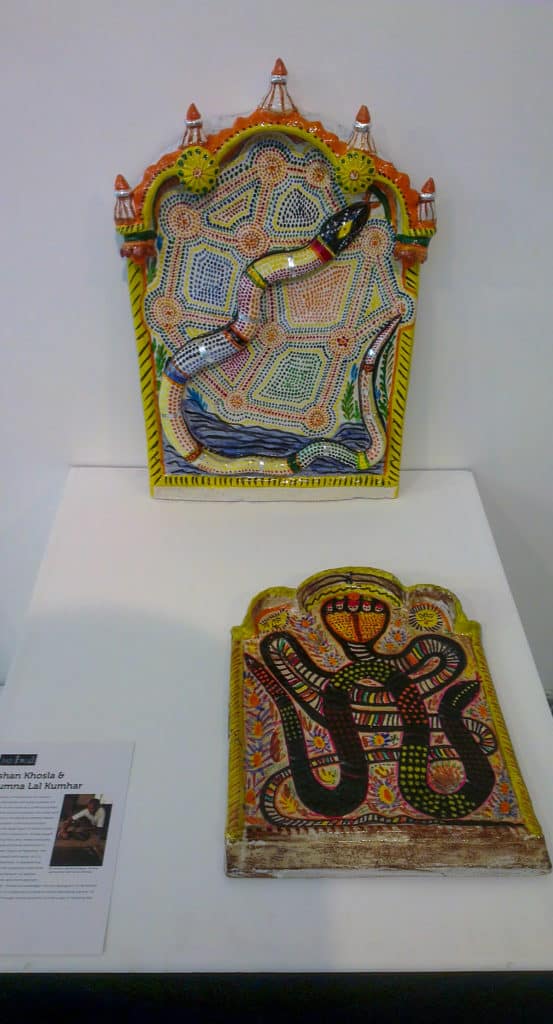While the mythical creature of the dragon is synonymous with China, its presence can be found across the Indo-Pacific. In this online exhibition, we feature artists both inside and outside China who are inspired by the dragon.
In pre-modern times, the dragon was imbued with mystical powers. The advance of Western science and technology seems to make it redundant to the modern world. But the resistance of nature evident in climate change suggests we do need to revive our respect fo the power of the elements. To this, we need to imagine new ways of making the dragon part of our life again. These artists pave the way.
UuDdam Tran Nguyen, Rồng Rắn Lên (Serpents’ Tails)
Rồng Rắn Lên (Serpents’ Tails) by UuDdam Tran Nguyen is an immersive installation of motorbikes whose exhaust systems inflate, feed, and give flight to tubular “serpents” sewn together from disposable plastic bags. In Nguyen’s metaphor, man wrestles with the by-products of his industry, which continue to wreak environmental imbalance and destruction
From Hindu and Greek mythologies to the Bible and Vietnamese nationalist stories, the inspiration for Serpents’ Tails is manifold. The fifteen15-minute, three3-channel video begins with the creation of homemade objects and snaking animals that are breathed into life by the toxic fumes emanating from motorcycle exhaust pipes – that which gives life can also extinguish it. In one chamber, a giant elephant inflates and bloats into form against the floor, walls, and ceilings (replicated at Galerie Quynh).
Later, adorned in facemasks, helmets, and sun-protective clothing, 44 riders and their motorcycles move in rectangular unison, as their literally exhaustive, toxic serpents drape over, veil, and even choke them. Barely able to see their way but gracefully maneuvering through the streets on “iron beasts,” the sequence is reminiscent of Thanh Giong, the legendary saint who rides on an iron horse and saves the Vietnamese kingdom from foreign invaders. A folktale common to schoolchildren in Vietnam, Nguyen’s adaptation is not one of heroism over imperialism, but a cautionary tale that pleads for serious environmental action over fictitious action heroes.
- UuDdam Tran Nguyen, Rồng Rắn Lên (Serpents’ Tails), 2019, Galerie Quynh, Ho Chi Minh City
- UuDdam Tran Nguyen, Rồng Rắn Lên (Serpents’ Tails), 2019, Galerie Quynh, Ho Chi Minh City
- UuDdam Tran Nguyen, Rồng Rắn Lên (Serpents’ Tails), 2019, Galerie Quynh, Ho Chi Minh City
- UuDdam Tran Nguyen, Rồng Rắn Lên (Serpents’ Tails), 2019, Galerie Quynh, Ho Chi Minh City
Qingdao University of Technology
Below are works specially made by students of Qingdao University of Technology for this online exhibition.

LIjialin Lizhi Lixuexue Quxiaole, Fantasy dragon, Qingdao University of Technology, College of Art and Design; Academic advisors: Liquantao JiangxiaoyingFor Chinese traditional culture, the expression of the dragon is varied, can through the painting, building decoration, embroidery, ceramic art, such as we Chinese dragon’s presence, and we are in a different way to express our understanding of the dragon, in stained glass according to the different placement mode through the artistic conception of the dragon, the abstract presentation reflects our understanding of cultural and understanding.
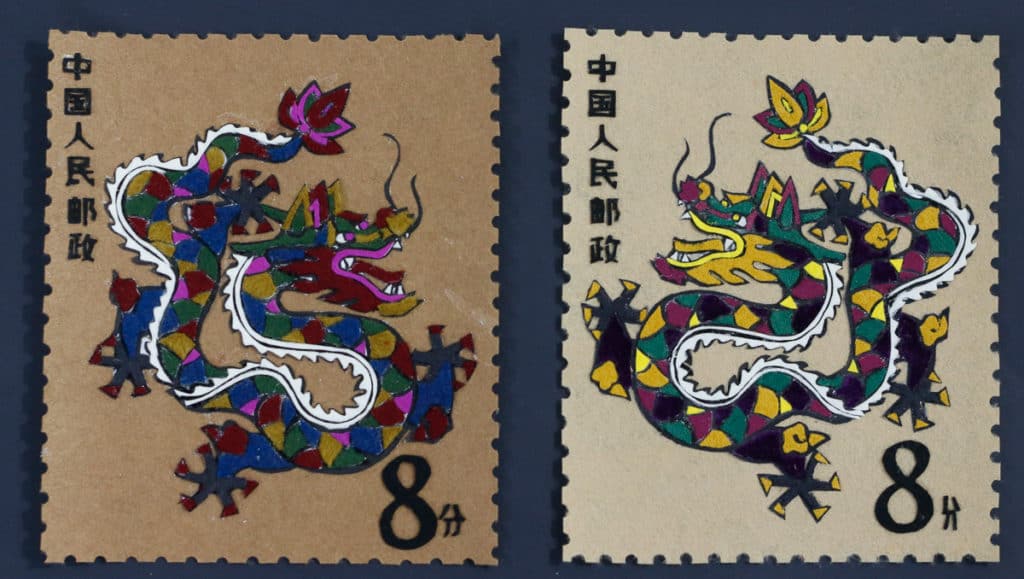
Liumengting, Zheng Rui, Qingdao University of Technology, College of Art and Design; Academic advisors: Liquantao Fangxiaoyan
The work implies all things stay in harmony with Heaven, including harmony between man and nature and both human physical and mental harmony.
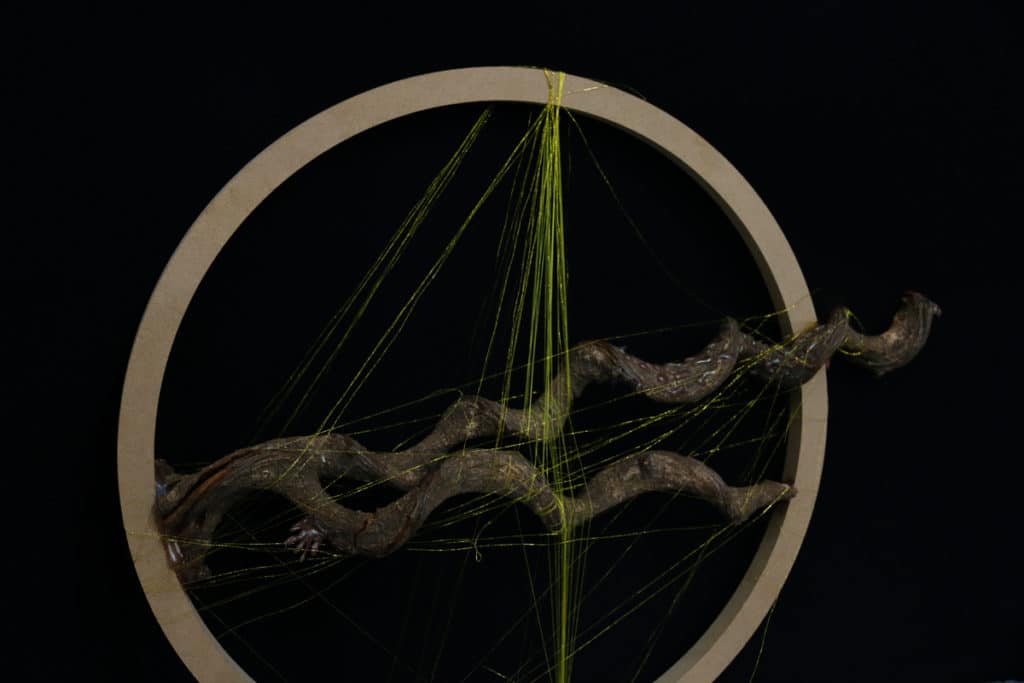
Huang Yunhan, Loong vine, Qingdao University of Technology, College of Art and Design; Academic advisors: Liquantao Fangxiaoyan
Natural·Buddhist mood
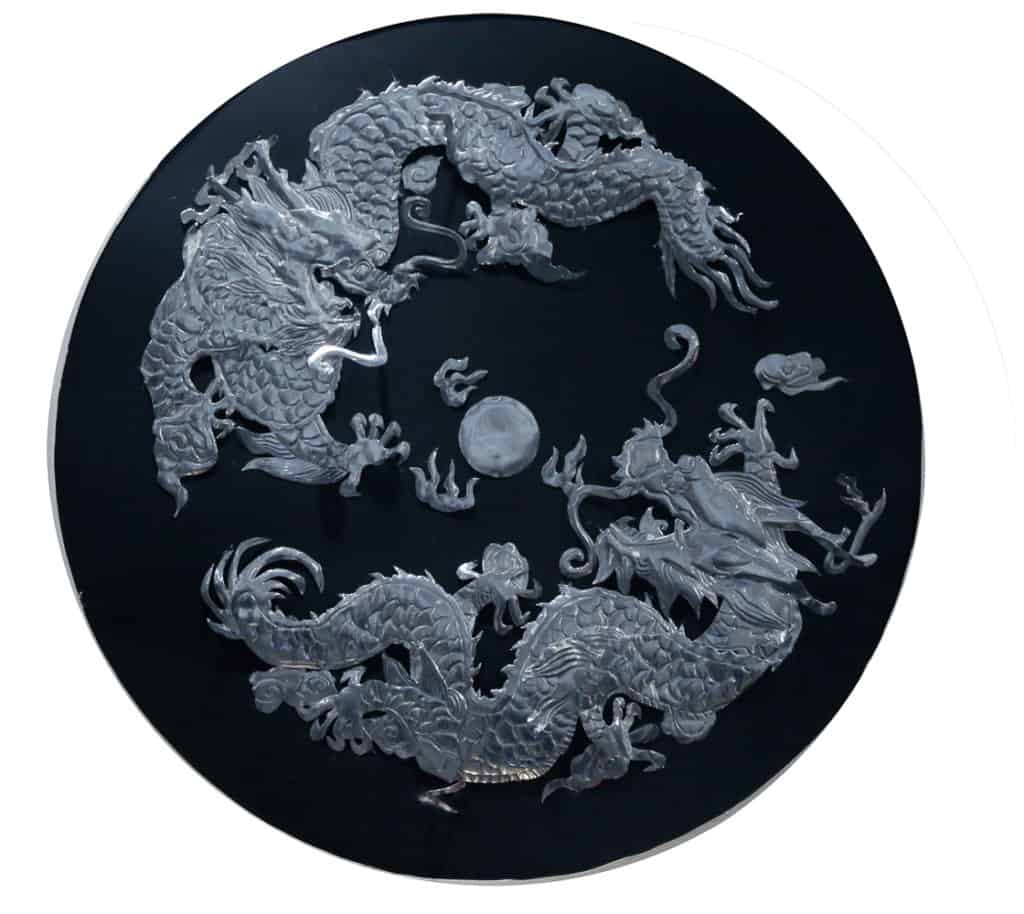
Yan Fei, Double dragon playing with pearl, Qingdao University of Technology, College of Art and Design; Academic advisors: Liquantao Fangxiaoyan
The design inspiration comes from the combination of cans and dragons, the materials used for cans.Cans painting is also known as aluminum foil painting, silver stickers.The inner wall of cans with metallic luster, a strong sense of silver texture and relief, so the works made of not only three-dimensional effect is particularly good, but also low carbon environmental protection. The two dragons in the painting are lifelike. The two dragons are fighting for a fireball. They round their eyes and glare at each other. The dragon culture is expressed in the form of can painting, which is not only novel, but also has a strong three-dimensional sense.
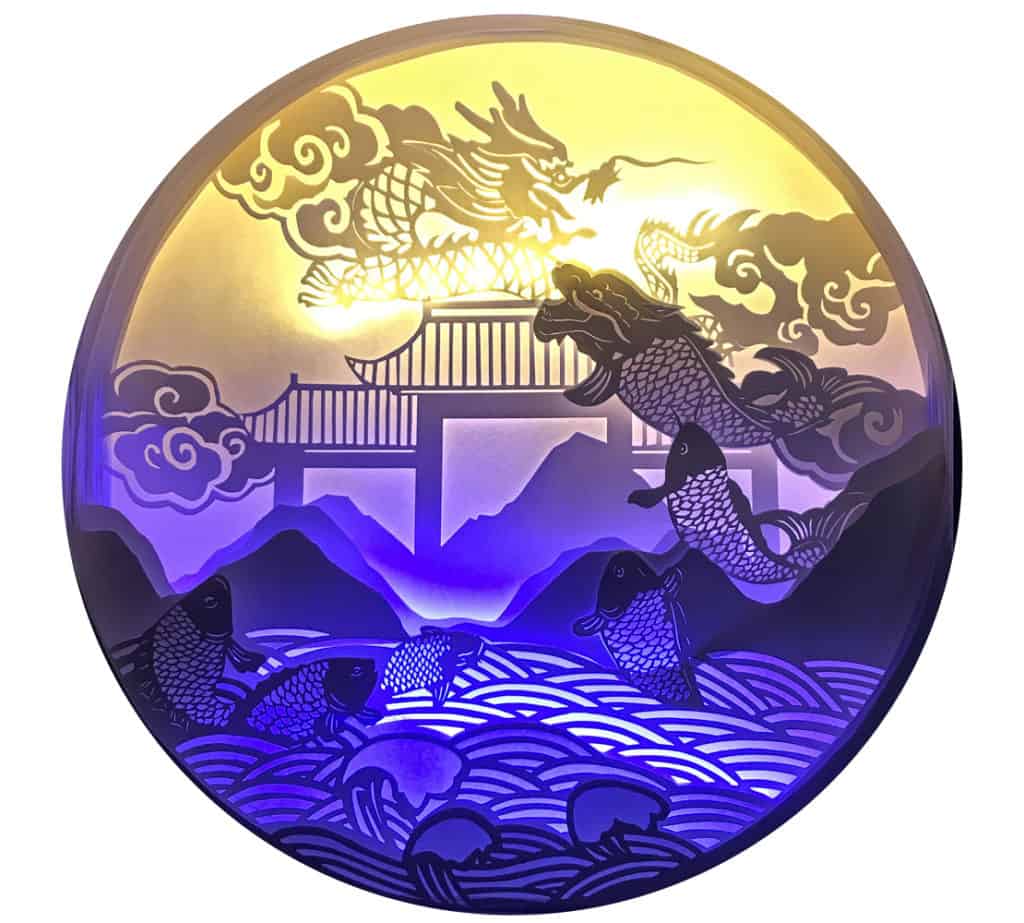
Yuan Chunxia, Carps jumping over the dragon gate, Qingdao University of Technology, College of Art and Design; Academic advisors: Liquantao Fangxiaoyan
The carps jump over the dragon gate in order to turn themselves into dragons.This work intends to express the spirit of trudging mountains and rivers, advancing against the current and striving for progress.

Lanbingyu, The white dragon, Qingdao University of Technology, College of Art and Design; Academic advisors: Liquantao Fangxiaoyan
The work combines traditional Chinese pearl embroidery with round fans to create the effect of a dragon flying to the water.
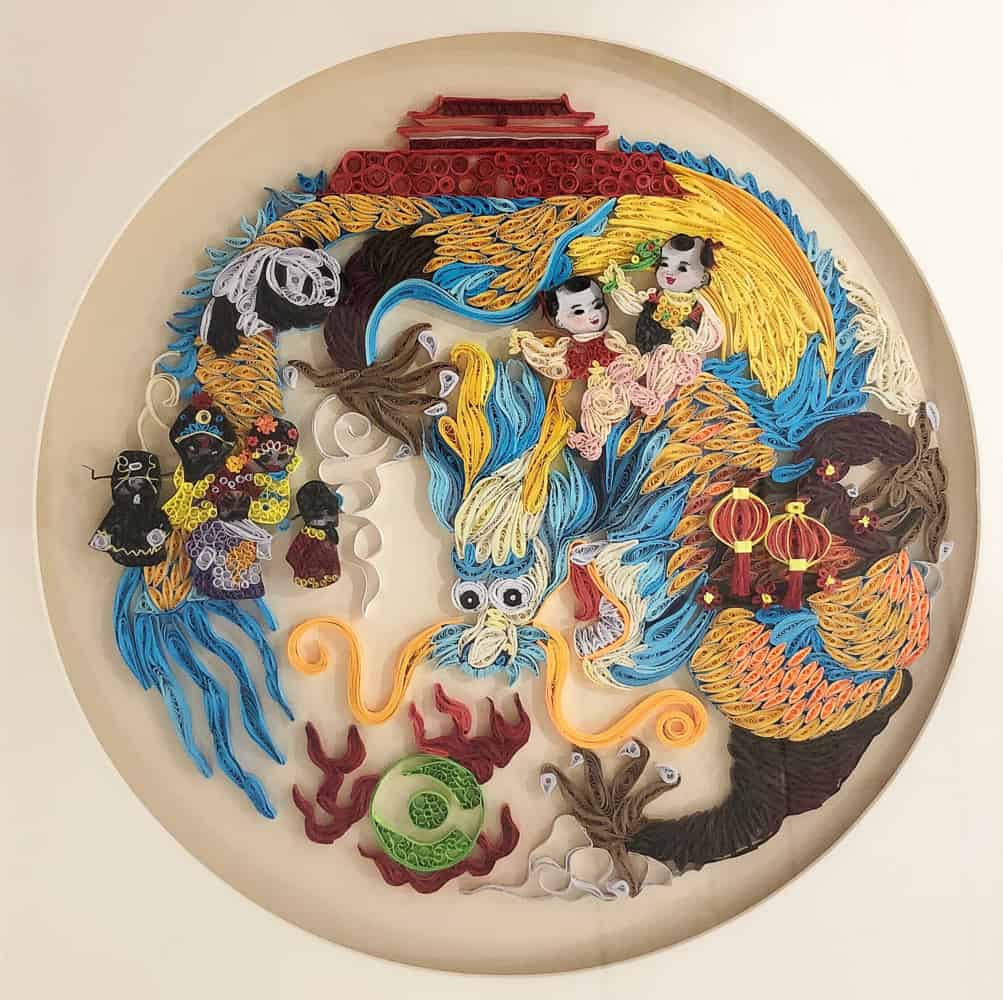
Zhangwenjuan Liyong, Soul of China, Qingdao University of Technology, College of Art and Design; Academic advisors: Liquantao Fangxiaoyan
The work is designed by several characteristic Chinese cultural elements, and use the momentum of the Chinese dragon to present the soul of China, and all the Chinese people are the descendants of dragons.
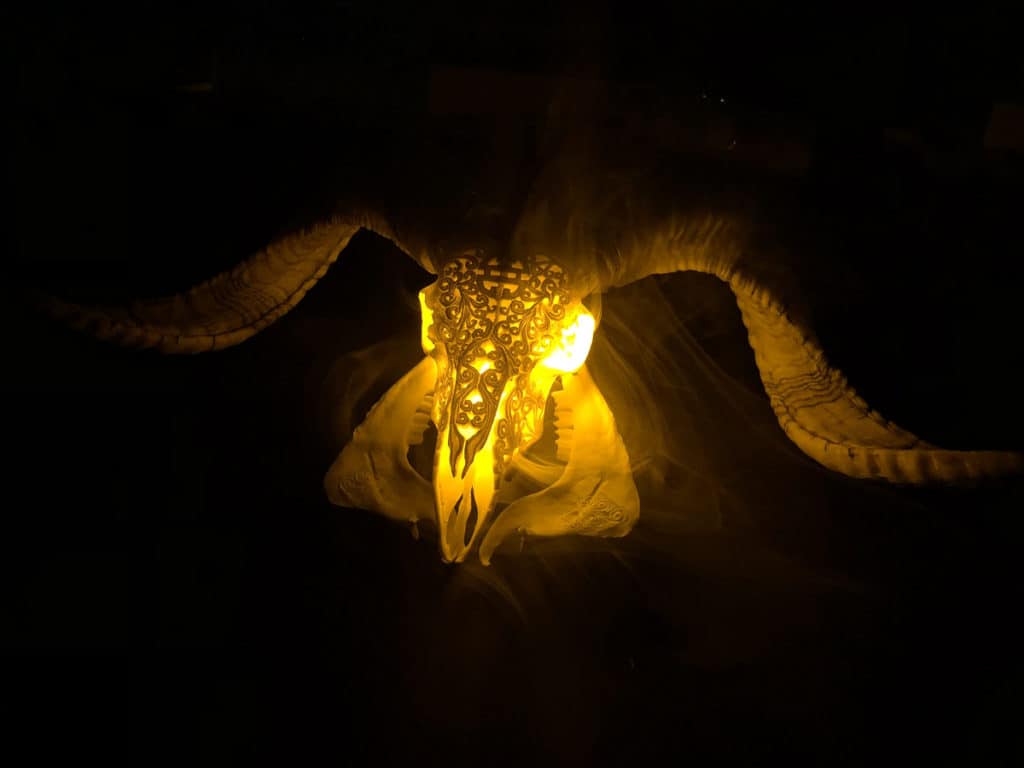
Dong Jincheng, Tibet dragon, Qingdao University of Technology, College of Art and Design; Academic advisors: Liquantao Fangxiaoyan
The Tibetan people are an ancient ethnic group in the west of China. Sheep culture is the epitome of Tibetan culture, the most representative. Sheep are not only regarded as gods by Tibetans, but also the spirit of source sheep supports the Tibetan people to resist foreign aggression and maintain national unity. The dragon is a symbol of Chinese civilization, people’s spiritual sustenance for beautiful things, so the sheep symbolizes the “dragon” in the hearts of Tibetans.

Xu Wenzhu Zhang Fan Zhong Jingjing Yan Fei Wang Jinghan, Light and Dragon, Qingdao University of Technology, College of Art and Design; Academic advisor: Liquantao Jiangxiaoying
The work use the skills of paper-cut, sticking cloth,and painting.
Mexico – The Quetzalcoatl as alebrijes
Art symbolising the feathered serpent known as the Quetzalcoatl was largely buried during the Spanish colonisation of Mexico. We have previously featured the work of Yunuen Perez who invokes this symbol from her childhood home near Puebla. Below we show some versions of this creature in the form of alebrije from the fabled Oaxaca village of San Martin Tilcajete.
Jumna lal Kumhar
For the conference Make it New Again in Ahmedaban, the traditional potter Jumna Lal Kumhar from Molela Rajasthan produced a series of ceramic plaques progressing from Naga Hindu snake god to the Aboriginal Rainbow Serpent. In his desert region of Rajasthan, the snake is also associated with water, as it is in Aboriginal communities. In representing Naga, Kumhar used the traditional relief form, while for the Rainbow Serpent he applied paint, which in his view was more appropriate to Aboriginal design.
Dragon nests
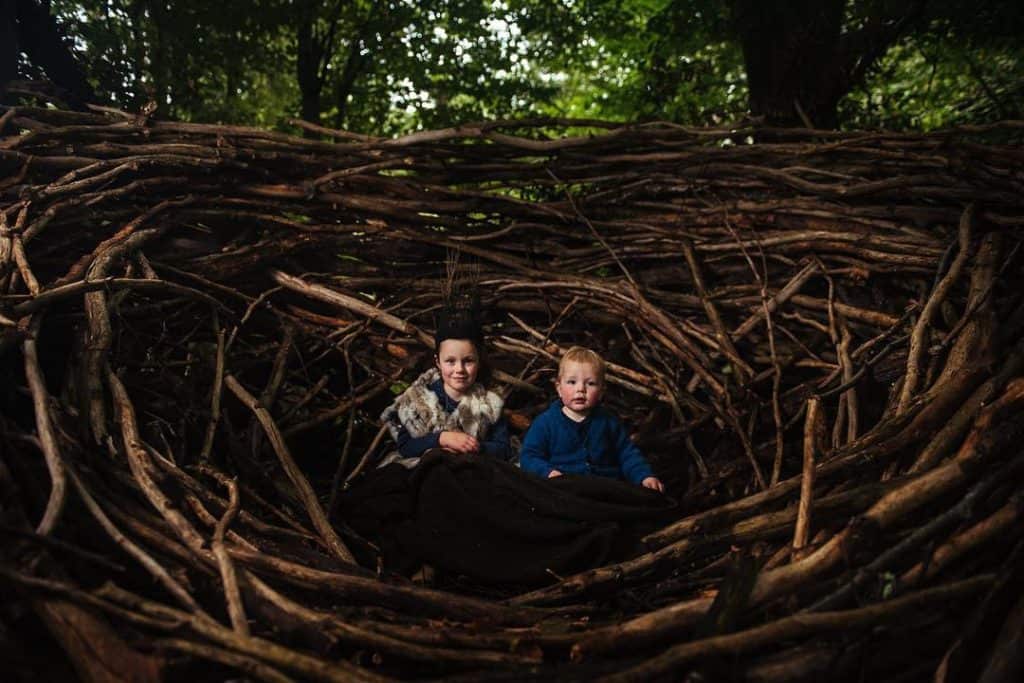
Half a dozen “dragon nests” can be found in the Dandenong Ranges outside Melbourne on the Neuman Track. Source: Mamma Knows East.

